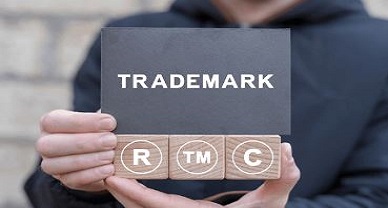Navigating Trademarks in the Era of Digital-Physical Hybrid Products and Services
A world increasingly defined by convergent technology – digital-physical hybrid goods and services – is providing the very framework through which businesses operate, innovate, and connect with their consumers. These products weave together the cloud through wearable devices or integrate augmented reality into mundane objects, among a whole other raft of hybridizations that bring technology closer to the physical. All of these bring a new dynamism with them and, inevitably, challenges–and opportunities–in the field of intellectual property, most particularly trademarks.
A trademark would be the asset that holds together a brand identity for a business, ensuring that its goods or services remain differentiated from others in the marketplace. The problem is that, given the hybridization of products and services, many questions arise as to what happens: how will trademarks apply to protect intangible software linked to physical, tangible products? Jurisdiction: how is it applicable where border-crossing digital services exist while physical goods are localized? This blog attempts to unravel these complexities and wrestle with the definitions of trademarks in the hybrid age while providing strategies for businesses to maneuver through this fluid arena.
Understanding Trademarks: The Foundation
A trademark is actually any sign, symbol, word, tagline, or any identifiers that separate the goods or services of one business from another. As such, fundamentally trademarks serve the following two purposes:
- They help consumers identify what products are produced for.
- They protect businesses against “Unfair Competition” by preventing others from using that equity of the trade brand.
Trademarks used to be a little blacker and whiter. They had physical goods that fell into certain classes, like clothing, electronics, etc.; then services were separately registered as, for example, consulting and financial services. Those lines are starting to fade in this current hybrid environment.
The Rise of Digital-Physical Hybrids
It stands for what is ergonomically incorrect that a computer label does not restrict considering all types of restraints. That is, the correct version should sound like:
A wearable device such as Smart Watches as an example of physical devices having internal sensors, but they rely on software platforms to make them function;
IoT Devices must be considered as smart home devices such as a thermostat or a security camera and link up with applications and cloud services.
AR/VR Tools: In the area of mixed reality,(Meta Quest) a VR helmet having mixed reality hardware and combined with physically immersive digital environments; and
Subscription Bundle: Physical products, combined with some digital services, (such as Peloton bikes with the on-demand workout classes).
All these hybrids promise a user experience without friction but with many layers in terms of rights.
Challenges in Protecting Hybrid Products and Services
- Defining the Scope of Trademark Protection
Mixed goods require companies to consider a category under which their products are to be classified. A single product can cover several trademark classes:
Physical Goods: The physical part of the hybrid (eg, the hardware of a smartwatch)
Digital Services: The software-related parts, platforms, and ecosystems (eg, health-tracking apps).
Apple, for instance, combines digital services as in the iOS apps or cloud-based data storage with physical hardware. Apple protects its brand through multiple trademark filings across different classes.
- Territorial Jurisdiction and Enforcement
In a given jurisdiction, physical goods are bought, but digital services are available globally. In this two-dimensional situation, enforcement becomes more complex:
The hardware of a product is supposedly protected in the U.S., while the digital service may receive access globally.
Also, an unauthorized use of a digital trademark in one country would affect the product physique with regard to another country indirectly.
Global brands must adopt an international trademark strategy by registering their trademarks in multiple jurisdictions under treaties such as the Madrid Protocol.
- Blur in Goods and Services
It has been underlined that trademark law suffers from too much overlapping of goods and services, seeing as:
A company dealing with fitness monitors filed Class 9 items for electronics, and under Class 41 of education, for software and the latter for a subscription-based physical fitness program. One major coffee company could possibly want to trademark a connected machine for coffee that could be controlled by an application. The filing is expected to be under:
Class 21 (for household articles)
Class 42 (software services)
Otherwise, there are risks to losing parts of their business venture and being left vulnerable for competitors to jump in the corresponding locations.
- Brandless Hybrids: The Significance.
Digital-physical hybrids attract more chances for opportunities. By using a trademark on the digital side, fake and cloned scientific weapons or similar ensure easier and dangerous impact in this particular century. For example, a duplicate fitness application borrowing its name from the real smartwatch brand can make customers go the wrong way and, therefore, even both mental and physical sides will be affected.
Strategies for Securing Trademarks in the Hybrid Era
- Experience a Comprehensive Trademarking System.
A well-experimented hybrid feature trademark should also take care of all areas comprising both physical and digital dimensions:
File under multiple trademark classes or registration numbers so as to be making claims and protecting almost anything a hybrid product has.
Use wide words in naming trademark applications because it is already prepared for advances in the technology or product development.
For example, Tesla registers a trademark for cars as well for software in the car as well as for its charging stations or even for its modest entertainment services as material within the car.
- Proactive Enforcement of Trademark Rights; Monitoring and Enforcement.
Vigilance is very paramount as one ventures into digital-physical hybrids to avert probable encroachment. Each will include strategies like:
Digital Monitoring: Deploy tools to see who and where the trademarks are being used in app stores, websites, and, or, social media.
Identify whether the ways of documenting an entire trademark strategy are possible when implementing policies at different locations or whether there is a breakdown of legalities and regulatory constraints in this area.
Global Enforcement: The key is working with local legal resources within crucial markets for protection of the brand.
Monitoring and enforcement of the mechanisms provides warning against illegal actors, hence ensuring that the customer has trust in the brand.
- Think of User Experience in Developing a Good Trademark Strategy.
Hybrid products depend exclusively on User Experience. This can reflect in Trademarks having seamless integration of physical as well as virtual elements.
Stay coherent in branding it as a consolidated suite which adapts to hardware, software, and marketing channels of a product.
Trademark s should be recognizable when displayed online through app icons or splash screens.
Nike, for example, unifies Fitbit hardware, mobile apps, and subscription services promoting its identity as a hybrid ecosystem.
- Use Technological Unfolding of Opportunities
For instance, technologies like the blockchain can further protect anything to do with trademarks.
Southampton-based firm Filament Inc is now using smart contracts made on Blockchain to handle a lot of its automation processes, for example, registration and deposit proposal proceedings.
Inbuilt Hybrid Technologies Proofs for Authenticity aboard watermarks incorporate hardware/software facilities.
This administration uplifts the benefit of traditional protection of the trademark of this hybrid market.
Future Trends in Hybrid Trademarks
Hybrids discovered some evolving trademark laws pressing under such heading (figure):
- Increase in the Coverage of Trademarkable Elements
Normally, the wordmark or device or slogan serves as a trademark. Nowadays, hybrid products have become extensive as they mark as such:
Haptic trademarks: vibrations and/or patterns of tactile feedback unique to such devices worn on the body.
Motion marks: creating animated signs on digital platforms or hybrid interfaces.
An example would be the application that BMW submitted for sound trademarks containing the electric hums produced by its EVs. This marks nicely the physical car and its digital interface.

- The Emergence of Metaverse Trademarks
Traditional issues about shrinkage of use have been located in the metaverse because physical production also should be present in virtual environments. Similar companies that keep the unique physical and digital name of their brands seek trademark registration in virtual reality sites.
Nike makes trademark or related filings for both “Nike” and “Just Do It” with applications even to virtual sneakers. Its brand is safe for the hybrid future situation.
- Global trademark laws will become more uniform
As hybrids become a common part of the environment, global harmonization is needed in terms of establishing uniform global trademark laws. International treaties need to evolve according to the existing norms, bridging new definitions incorporating the various challenges brought by the hybrids concerning physical territoriality and digital borderlessness.
Charting the Trademark Landscape for Hybrids
The economic value of trademark in digital and physical quotation assignments has become strategic and will continue to become so rather than just legal-techie in a global identity and consumer confidence in brand as even noted in Africa of total connection among people today.
What businesses will need to do now is to negotiate a path through the confusion of overlapping jurisdictions, technological shifts, and even the enlargement in the lists of things which qualify as products or services. These prerequisites have a necessity approach that always anticipates all client-triggered scenarios as far as possible into the future.
The best success with trademark protection can be achieved proactively. Through the taking of all-encompassing registration strategies it is vital to consider mastering the emerging technologies as well as having an eye upon what looks forward to this future.
Integration of traditional and online register under alteration with emerging technologies will even secure a wider protection still by such all-encompassing registration strategy.
Finally, trademarks go beyond the legal excerpts. They are the bond holding the physical and interactive hybrid of goods in place but also ensure that the brand stays intact, authenticated, and relevant in this ever-increasingly ever-uniform world.
Author: Daisy Banakhede, in case of any queries please contact/write back to us via email to chhavi@khuranaandkhurana.com or at Khurana & Khurana, Advocates and IP Attorney.
References-
https://depenning.com/blog/protecting-trademarks-in-the-digital-age/
https://www.mondaq.com/india/trademark/1564726/trademark-protection-strategies-for-digital-and-physical-hybrid-products
https://depenning.com/blog/trademarks-in-metaverse/
https://www.linkedin.com/pulse/trademarks-digital-age-navigating-new-frontier-boicova-wynants-6x4se


